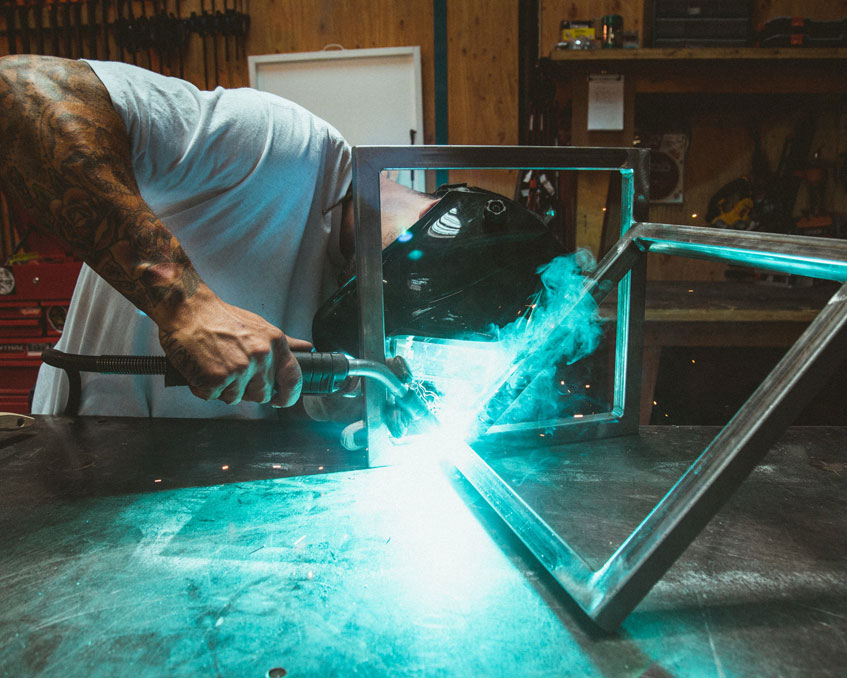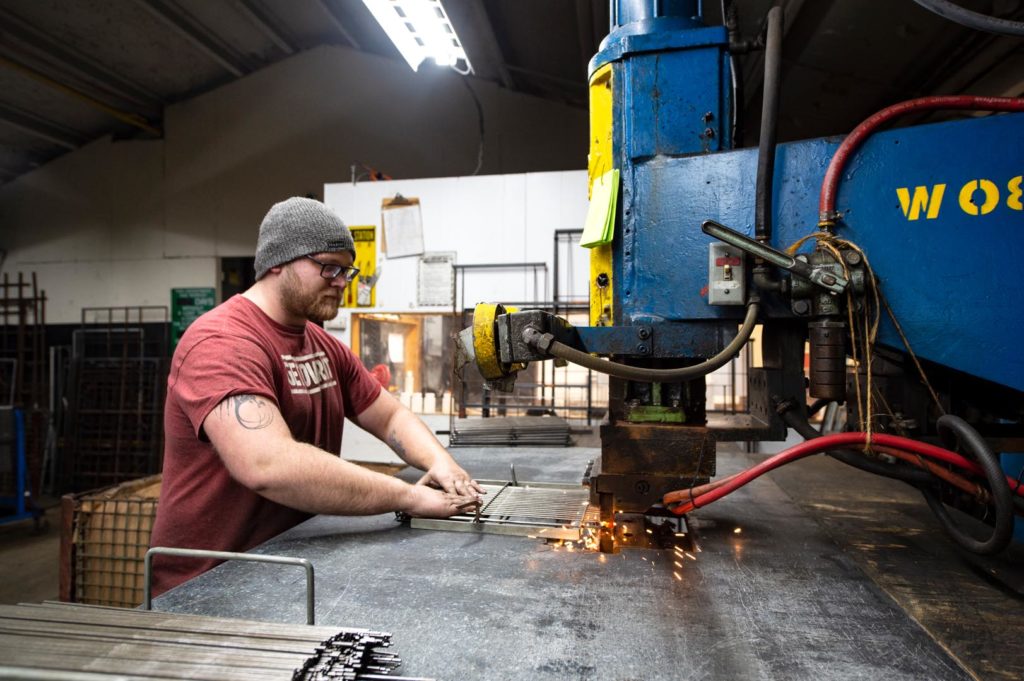Usual Welding Repair Service Issues and How to Address Them Successfully
Welding repair services often experience a variety of issues that can threaten the integrity of the final item. Usual troubles include insufficient penetration, porosity, and imbalance, among others. Each issue provides unique challenges that need specific techniques for resolution. Understanding these concerns is important for welders aiming to improve their skills and outcomes. This discussion will certainly check out these common welding repair concerns and effective approaches to resolve them.
Inadequate Infiltration
Inadequate infiltration takes place when the weld metal falls short to completely fuse with the base material, resulting in weak joints and prospective structural failures. This problem typically originates from not enough heat input, incorrect electrode angle, or inappropriate welding speed. Welders might encounter insufficient penetration as a result of a miscalculation of the necessary specifications for a specific product thickness or kind. Additionally, contamination on the base material's surface area can prevent reliable bonding, aggravating the problem. To attend to insufficient penetration, welders should assure ideal setups on their devices and preserve a clean work surface. Normal examination of welds is recommended to recognize any shortages early, enabling for prompt adjustments and the prevention of compromised structural stability in welded settings up.
Porosity
Porosity is a typical issue in bonded joints that materializes as small gas bubbles caught within the weld steel. This issue can endanger the integrity of the weld, leading to decreased toughness and possible failing under stress. Belgrade. Porosity generally occurs from contamination, wetness, or incorrect welding strategies, which permit gases to run away into the liquified weld pool. To attend to porosity, welders need to ensure correct surface prep work, keep a tidy working atmosphere, and make use of suitable welding specifications. Additionally, selecting the best filler material and shielding gas can reduce gas entrapment. Regular assessment and testing of welds can aid identify porosity early, ensuring timely rehabilitative activities are taken, consequently preserving the top quality and reliability of the bonded structure
Misalignment
Imbalance in welding can occur from different variables, including improper configuration and thermal development. Recognizing the source is vital for efficient resolution. Several adjustment techniques are offered to realign parts and ensure structural integrity.
Causes of Misalignment
Welding imbalance often originates from a variety of underlying concerns that can compromise architectural honesty. One key reason is incorrect fit-up of parts prior to welding, which can result in spaces and uneven surface areas. Variations in thermal growth during the welding process can likewise lead to distortion, particularly if the products being joined have various coefficients of growth. In addition, insufficient clamping and fixturing might fail to hold components securely in area, resulting in movement during welding. Inadequately maintained tools, including welding devices and tools, may introduce disparities in the weld bead, further contributing to imbalance. Ultimately, driver mistake, coming from inadequate training or experience, can also play a substantial duty in creating misaligned welds.
Correction Strategies Readily Available
Addressing misalignment efficiently needs a combination of rehabilitative techniques customized to the specific concerns available. One common technique is the use of fixtures or jigs to hold components in the right setting during welding, guaranteeing constant positioning. In addition, pre-heating the materials can help in reducing distortion and improve fit-up. For significant misalignment, mechanical adjustment methods, such as making use of hydraulic jacks or clamps, can be used to fix the setting before welding. Post-weld warmth therapy might also be necessary to eliminate stress and anxieties triggered by misalignment. Ultimately, mindful examination and modification throughout the arrangement phase can avoid misalignment issues from becoming considerable problems, promoting a smoother welding procedure and improving overall structural integrity.
Distortion
Distortion is an usual challenge in welding that can develop from various elements, including unequal heating & cooling. Comprehending the reasons of distortion is essential for carrying out effective prevention techniques. Resolving this problem not just boosts architectural stability but also enhances the overall high quality of the weld.
Reasons for Distortion
When subjected to the intense warm of welding, products typically undergo modifications that can cause distortion. This sensation largely develops from thermal expansion and tightening throughout the welding procedure. As the weld area warms up, the material broadens; upon cooling, it contracts, which can create inner stresses. In enhancement, unequal home heating throughout a work surface can worsen these stresses, leading to bending or flexing. The kind of material likewise plays a significant function; metals with differing thermal conductivity and coefficients of development may respond in a different way, resulting in uncertain distortions. Furthermore, poor joint layout and poor fixturing can add to imbalance during welding, increasing the probability of distortion. Understanding these reasons is important for efficient welding fixing and avoidance approaches.
Prevention Techniques
Efficient avoidance methods for distortion during welding focus on controlling warm input and making sure proper joint layout. Maintaining a regular heat input helps to minimize thermal expansion and tightening, which can result in distortion. Using methods such as preheating the workpiece can likewise lower the temperature level slope, advertising uniform home heating. Furthermore, choosing proper joint styles, such as T-joints or lap joints, can improve security and decrease stress focus. Implementing proper fixturing to safeguard the work surfaces in position further help in maintaining alignment during the welding process. Ultimately, staggered welding series can distribute heat more equally, preventing localized distortion. By applying these techniques, welders can significantly reduce the chance of distortion and enhance the general quality of their welds.
Breaking
Fracturing is a typical issue come across in welding repairs, often arising from numerous aspects such as incorrect cooling rates, material selection, or poor joint prep work. The event of fractures can considerably endanger the honesty of the weld, resulting in potential failures during procedure. To address this problem, welders need to initially analyze the root causes, making sure that products are suitable and suitably picked for the certain application. Additionally, regulating the cooling rate throughout the welding process is important; quick cooling can cause stress and lead to fracturing. Correct joint layout and preparation additionally add to minimizing the threat. Executing these approaches can enhance weld top quality and resilience, inevitably lowering the possibility of fracturing in completed weldments.

Incomplete Blend
A substantial problem in welding go to these guys fixings is insufficient blend, which happens when the weld steel does not properly bond with the base product or previous weld passes - Welding. This problem can bring about weak points in the joint, potentially jeopardizing the stability of the welded structure. Aspects adding to insufficient combination consist of inadequate warm input, improper welding strategy, and contamination of the surfaces being joined. To resolve this concern successfully, welders need to assure correct pre-weld cleaning and surface prep work, along with readjust their welding specifications to attain adequate infiltration and combination. Regular evaluation during the welding procedure can also assist determine incomplete blend early, permitting timely corrective procedures to boost the overall top quality of the weld
Overheating
While welding repair services can boost architectural honesty, overheating presents a significant difficulty that can result in material degradation. Too much warmth during welding can alter the mechanical residential or commercial properties of metals, causing minimized strength, increased brittleness, and bending. This sensation is especially vital in high-stress applications where structural integrity is paramount. Identifying getting too hot can entail visual assessments for discoloration or distortion, in addition to monitoring temperature level throughout the welding process. To minimize the threats linked with getting too hot, welders need to utilize ideal techniques, such as regulating warm input, changing traveling speed, and making use of ideal filler products. Furthermore, applying pre- and post-weld warm treatments can aid restore product residential or commercial properties and improve the overall quality of the repair service, making certain long-lasting performance and security.
Regularly Asked Inquiries
What Are the Usual Indications of a Welding Flaw?

Just How Can I Check My Welds for High quality?
To evaluate welds for quality, one can make use of visual evaluations, ultrasonic testing, and radiographic approaches. Each technique assures structural integrity, recognizes issues, and confirms adherence to defined requirements, ultimately boosting the integrity of the bonded joints.
What Security Preventative Measures Should I Take While Welding?
When welding, one must focus on safety and security by putting on proper personal safety devices, guaranteeing Learn More proper ventilation, safeguarding combustible products away, maintaining a clean workspace, and understanding environments to stop mishaps and injuries.
Can I Fix a Weld Without Redesigning the Entire Joint?
Repairing a weld without redesigning the entire joint is possible, relying on the damage (Montana Mobile Welding and Repair Belgrade). Strategies such as grinding, including filler material, or utilizing a welding process can efficiently resolve details problems while protecting the bordering framework
What Tools Are Essential for Reliable Welding Fixes?
Essential tools for effective welding repairs consist of a welding device, cord brush, grinder, protective equipment, clamps, and filler products. Each device plays an important function in ensuring top quality and safety and important source security during the fixing process. Porosity normally emerges from contamination, moisture, or improper welding methods, which allow gases to get away into the molten weld pool. Poorly kept equipment, including welding machines and devices, might present disparities in the weld bead, further contributing to misalignment. When subjected to the intense warm of welding, products typically undertake modifications that can lead to distortion. Fracturing is an usual concern run into in welding repairs, frequently resulting from different variables such as improper cooling rates, material option, or poor joint preparation. A considerable problem in welding fixings is incomplete blend, which occurs when the weld metal does not sufficiently bond with the base material or previous weld passes.
Comments on “Key methods to deal with warping in Montana Mobile Welding and Repair Belgrade”